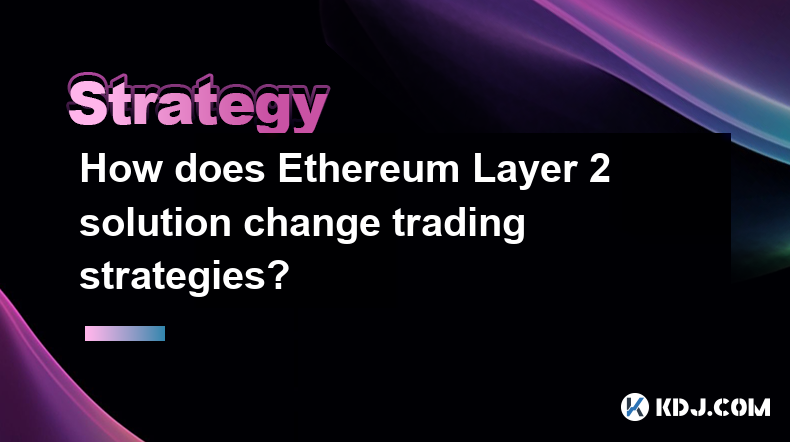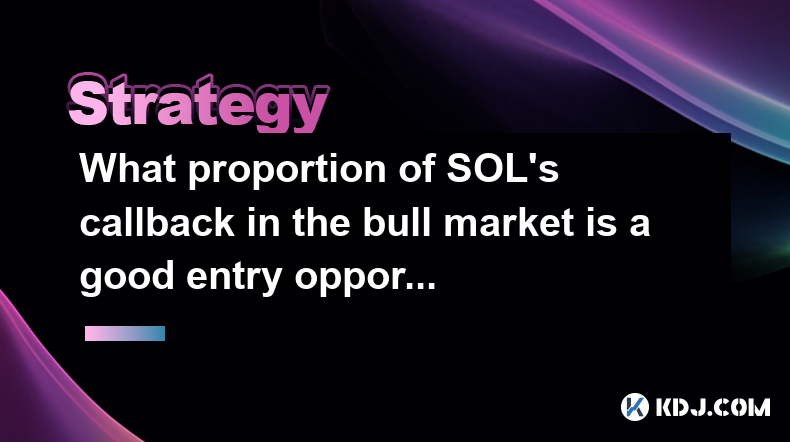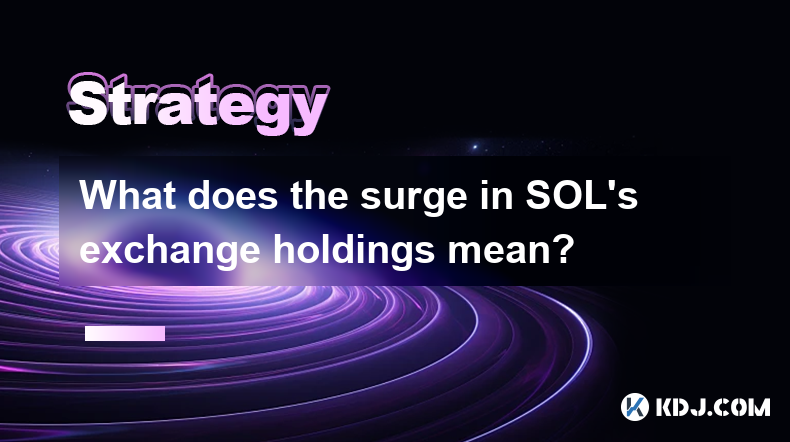-
 Bitcoin
Bitcoin $88,555.6766
1.18% -
 Ethereum
Ethereum $1,626.4043
-1.22% -
 Tether USDt
Tether USDt $0.9998
-0.01% -
 XRP
XRP $2.1018
-1.27% -
 BNB
BNB $605.8750
0.04% -
 Solana
Solana $140.3422
0.04% -
 USDC
USDC $0.9999
0.00% -
 Dogecoin
Dogecoin $0.1643
1.27% -
 TRON
TRON $0.2481
1.05% -
 Cardano
Cardano $0.6359
-1.63% -
 Chainlink
Chainlink $13.3216
-2.53% -
 UNUS SED LEO
UNUS SED LEO $9.1797
-2.79% -
 Avalanche
Avalanche $20.3681
-2.52% -
 Stellar
Stellar $0.2473
-4.43% -
 Sui
Sui $2.3043
2.50% -
 Shiba Inu
Shiba Inu $0.0...01257
-1.15% -
 Toncoin
Toncoin $2.9429
-3.48% -
 Hedera
Hedera $0.1738
0.16% -
 Bitcoin Cash
Bitcoin Cash $347.0587
1.49% -
 Hyperliquid
Hyperliquid $18.2576
-0.35% -
 Litecoin
Litecoin $79.8456
-0.89% -
 Polkadot
Polkadot $3.7809
-4.73% -
 Dai
Dai $0.9999
-0.01% -
 Bitget Token
Bitget Token $4.4439
-0.50% -
 Ethena USDe
Ethena USDe $0.9991
-0.01% -
 Pi
Pi $0.6313
-0.96% -
 Monero
Monero $216.2035
0.57% -
 Pepe
Pepe $0.0...08138
3.46% -
 Uniswap
Uniswap $5.3889
-1.68% -
 OKB
OKB $50.9281
-0.23%
How does Ethereum Layer 2 solution change trading strategies?
Ethereum Layer 2 solutions transform trading strategies by reducing transaction fees, accelerating confirmation times, enhancing scalability, and creating opportunities for automated trading and frictionless liquidity access.
Feb 25, 2025 at 04:24 pm

Key Points:
Overview of Ethereum Layer 2 Solutions:
- Definition and benefits of Layer 2 solutions
- Key differences between popular Layer 2 protocols (Optimistic Rollups, ZK Rollups, State Channels)
Impact on Trading Strategies:
- Reduced transaction fees and faster confirmation times
- Flexibility in order execution and liquidity access
- New opportunities for automated trading strategies
Considerations for Utilizing Layer 2 Solutions:
- Security and decentralization trade-offs
- Risk management and deposit safety
Case Studies and Examples:
- Successful implementation of Layer 2 solutions in the trading industry
- Demonstrated enhancements in efficiency and cost savings
How does Ethereum Layer 2 solution change trading strategies?
1. Overview of Ethereum Layer 2 Solutions
Layer 2 solutions are protocols built upon the Ethereum blockchain that process transactions off-chain. This reduces congestion and transaction fees on the mainnet Ethereum blockchain, providing several benefits for traders:
- Transaction Fees: Ethereum Layer 2 solutions drastically reduce transaction fees by executing transactions in batches off-chain. By consolidating multiple transactions before submitting them to the mainnet, Layer 2s spread the gas fees across participants, significantly lowering overall transaction costs.
- Confirmation Times: Layer 2 solutions significantly accelerate transaction confirmation times. Instead of waiting for confirmation on the mainnet, which can take minutes or longer during peak usage, Layer 2 transactions are typically confirmed in seconds or even milliseconds. This enhanced speed offers traders a decisive advantage in quickly executing time-sensitive trades.
- Scalability: Layer 2 solutions address the scalability limitations of the Ethereum blockchain. By offloading transaction processing to Layer 2 protocols, the network can handle a far greater volume of transactions without compromising security or decentralization. This allows traders to execute more trades simultaneously, increasing potential profits.
2. Impact on Trading Strategies
The advantages offered by Ethereum Layer 2 solutions have a profound impact on trading strategies in the cryptocurrency market:
- Order Execution: Layer 2 solutions enable traders to execute orders more efficiently. The reduced transaction fees and rapid confirmation times allow for tighter spread execution and quick entry and exit from trades. Traders can now seize market opportunities with greater precision and minimize slippage.
- Liquidity Accessibility: Layer 2 solutions expand liquidity access, particularly for smaller traders. Liquidity fragmentation on the Ethereum mainnet often limits access to the best prices, creating price discrepancies that traders can exploit. Layer 2 protocols aggregate liquidity from different venues, providing traders with deeper order books and better pricing.
- Automated Trading Strategies: Layer 2 solutions create new possibilities for automated trading strategies. The reduced transaction fees and increased throughput enable traders to deploy more complex trading algorithms and arbitrage strategies. Automation can optimize order execution, capture market opportunities, and reduce the risk of human error.
3. Considerations for Utilizing Layer 2 Solutions
While Ethereum Layer 2 solutions offer significant benefits, traders should consider the following before utilization:
- Security and Decentralization: Layer 2 protocols introduce a degree of centralization compared to the Ethereum mainnet. Trust in the operator of the Layer 2 solution becomes crucial, as they have control over transaction processing and fund management. Traders should carefully evaluate the reputation and security measures of different Layer 2 providers.
- Risk Management: Layer 2 solutions may add complexity to risk management. Unlike direct interactions with the Ethereum mainnet, traders must consider the potential risks associated with their chosen Layer 2 protocol. Effective risk management involves monitoring transaction status, understanding the deposit and withdrawal processes, and mitigating custody risk.
- Deposit Safety: Traders must ensure the safety of their deposited funds on Layer 2 solutions. Thoroughly research and select well-established Layer 2 protocols with transparent custody arrangements. Consider using non-custodial solutions that provide users with direct control over their private keys.
4. Case Studies and Examples
The implementation of Ethereum Layer 2 solutions in the trading industry has yielded notable successes:
- dYdX: dYdX, a decentralized exchange built on StarkWare's Layer 2 solution, has processed billions of dollars in trading volume. Offering low transaction fees, rapid execution speeds, and deep liquidity, dYdX has attracted a significant user base.
- Uniswap v3: Uniswap v3, a popular decentralized exchange, has integrated Optimistic Rollups to reduce transaction fees. This upgrade has enhanced the cost-effectiveness of trading on Uniswap v3, particularly for small trades and frequent traders.
FAQs
1. What are the most popular Layer 2 solutions for Ethereum?
Optimistic Rollups (Arbitrum, Optimism), ZK Rollups (StarkWare, zkSync), State Channels (Raiden Network, Celer Network)
2. How can I measure the security of a Layer 2 solution?
Research the team behind the project, review their codebase, and assess their community support and adoption.
3. What are the best practices for managing risk on Layer 2 solutions?
Monitor transactions, understand deposit and withdrawal processes, choose reputable providers, and implement risk mitigation strategies.
4. What advantages do Layer 2 solutions offer over the Ethereum mainnet?
Reduced transaction fees, faster confirmation times, increased scalability, enhanced order execution, improved liquidity access, and new opportunities for automated trading strategies.
Disclaimer:info@kdj.com
The information provided is not trading advice. kdj.com does not assume any responsibility for any investments made based on the information provided in this article. Cryptocurrencies are highly volatile and it is highly recommended that you invest with caution after thorough research!
If you believe that the content used on this website infringes your copyright, please contact us immediately (info@kdj.com) and we will delete it promptly.
- U.S. Digital Asset Firms Are Reportedly Considering Applying for Bank Charters and Licenses
- 2025-04-22 15:40:12
- OM Slides Deeper as Massive Token Burn Falls Flat
- 2025-04-22 15:40:12
- Ethereum Crashes, Its Share of the Overall Virtual Asset Market Fell Below 7%
- 2025-04-22 15:35:12
- Dogecoin Community Celebrates Dogeday 4/20, Buoyed by ETF Filing Buzz
- 2025-04-22 15:35:12
- ZetaChain Integrates Arbitrum to Offer Streamlined Universal App Usage
- 2025-04-22 15:30:12
- Deutsche Bank and Standard Chartered Are Expanding Their Crypto Operations in the United States
- 2025-04-22 15:30:12
Related knowledge

How to use trading volume to determine the buying and selling timing of BCH?
Apr 22,2025 at 04:14pm
Trading volume is a critical indicator that traders use to gauge the strength and direction of market trends, and it can be particularly useful when determining the buying and selling timing of Bitcoin Cash (BCH). By analyzing the trading volume, investors can gain insights into the market sentiment and make more informed decisions about when to enter o...

What proportion of SOL's callback in the bull market is a good entry opportunity?
Apr 22,2025 at 03:43pm
The question of what proportion of SOL's callback in a bull market represents a good entry opportunity is a nuanced one, requiring a deep dive into market dynamics, historical data, and risk management strategies. Let's explore this topic in detail. Understanding SOL and Bull MarketsSolana (SOL) is a high-performance blockchain platform known for its fa...

Can BCH's Willy indicator be bottomed out in the oversold area?
Apr 22,2025 at 02:56pm
Understanding the Willy IndicatorThe Willy indicator, also known as the Willy ratio, is a technical analysis tool used in the cryptocurrency market to assess the potential for a price reversal. It is calculated by dividing the current price of a cryptocurrency by its 200-day moving average. When the Willy indicator falls into the oversold area, it sugge...

What does the surge in SOL's exchange holdings mean?
Apr 22,2025 at 04:07pm
The recent surge in SOL's exchange holdings has sparked considerable interest and debate within the cryptocurrency community. SOL, the native token of the Solana blockchain, has seen a notable increase in the amount of tokens held on various cryptocurrency exchanges. This phenomenon can have several implications for the token's price, market sentiment, ...

What to do if SHIB's HODL wave indicator shows loose chips?
Apr 21,2025 at 03:07pm
If the SHIB's HODL wave indicator shows loose chips, it suggests that a significant portion of the SHIB holders are selling their tokens, potentially leading to increased volatility and a possible price drop. Understanding how to navigate this situation is crucial for any SHIB investor. This article will guide you through the steps to take when you noti...

Is it a risk that SHIB's derivatives position is 3 times that of the spot?
Apr 20,2025 at 12:35am
Is it a risk that SHIB's derivatives position is 3 times that of the spot? The cryptocurrency market is known for its volatility and high-risk nature, and Shiba Inu (SHIB) is no exception. One of the metrics that traders and investors closely monitor is the ratio of derivatives to spot positions. SHIB's derivatives position being three times that of the...

How to use trading volume to determine the buying and selling timing of BCH?
Apr 22,2025 at 04:14pm
Trading volume is a critical indicator that traders use to gauge the strength and direction of market trends, and it can be particularly useful when determining the buying and selling timing of Bitcoin Cash (BCH). By analyzing the trading volume, investors can gain insights into the market sentiment and make more informed decisions about when to enter o...

What proportion of SOL's callback in the bull market is a good entry opportunity?
Apr 22,2025 at 03:43pm
The question of what proportion of SOL's callback in a bull market represents a good entry opportunity is a nuanced one, requiring a deep dive into market dynamics, historical data, and risk management strategies. Let's explore this topic in detail. Understanding SOL and Bull MarketsSolana (SOL) is a high-performance blockchain platform known for its fa...

Can BCH's Willy indicator be bottomed out in the oversold area?
Apr 22,2025 at 02:56pm
Understanding the Willy IndicatorThe Willy indicator, also known as the Willy ratio, is a technical analysis tool used in the cryptocurrency market to assess the potential for a price reversal. It is calculated by dividing the current price of a cryptocurrency by its 200-day moving average. When the Willy indicator falls into the oversold area, it sugge...

What does the surge in SOL's exchange holdings mean?
Apr 22,2025 at 04:07pm
The recent surge in SOL's exchange holdings has sparked considerable interest and debate within the cryptocurrency community. SOL, the native token of the Solana blockchain, has seen a notable increase in the amount of tokens held on various cryptocurrency exchanges. This phenomenon can have several implications for the token's price, market sentiment, ...

What to do if SHIB's HODL wave indicator shows loose chips?
Apr 21,2025 at 03:07pm
If the SHIB's HODL wave indicator shows loose chips, it suggests that a significant portion of the SHIB holders are selling their tokens, potentially leading to increased volatility and a possible price drop. Understanding how to navigate this situation is crucial for any SHIB investor. This article will guide you through the steps to take when you noti...

Is it a risk that SHIB's derivatives position is 3 times that of the spot?
Apr 20,2025 at 12:35am
Is it a risk that SHIB's derivatives position is 3 times that of the spot? The cryptocurrency market is known for its volatility and high-risk nature, and Shiba Inu (SHIB) is no exception. One of the metrics that traders and investors closely monitor is the ratio of derivatives to spot positions. SHIB's derivatives position being three times that of the...
See all articles























































































